The high-flying job that's not for the faint-hearted
- Published
Francois Botha was going about his daily business when suddenly a military fighter jet flashed by.
"I swear I could see the whites of the eyes of the pilot," he says.
"Then all of a sudden the sound hit us. It was almost too close for comfort."
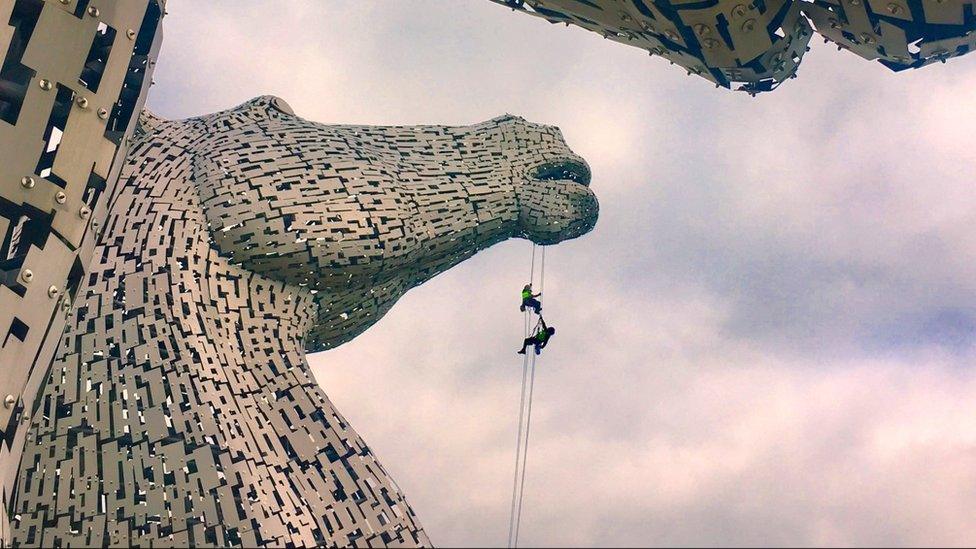
Paul Smith has worked on a number of iconic structures such as the Kelpies
The close encounter was a reminder that anything can happen when you are working on ropes 165ft (50m) up a communications tower in a remote area of south-west Scotland.
Looking back Francois thinks the jet may have been 20m or 30m (98ft) higher than him but it was a shock for it to be so close.
"I think he was just showing off how low he could fly," he says.
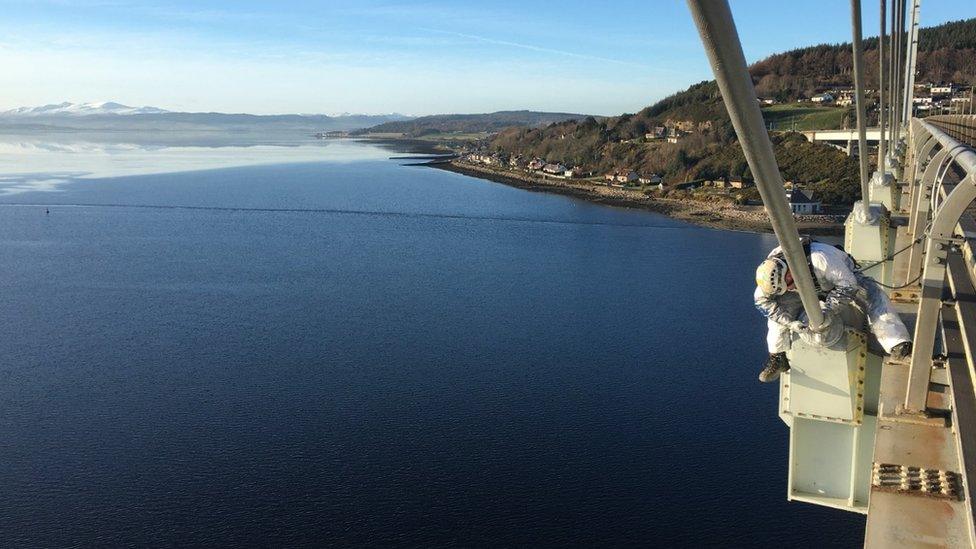
Rope access technicians can reach places where no-one else goes, as can be seen in this picture of the Kessock Bridge
Francois is well aware of the dangers of working at height.
He moved into rope access almost 20 years ago after a spell as a field guide in South Africa.
The 42-year-old says he is sceptical about anyone who says they have no fear when they put their equipment on for the first time and look over the edge of a 20-storey building.
He says: "Even after all these years of me working at height and climbing, I still have that inherent fear of falling - I just don't want to do it.
"What makes me a bit more relaxed is that I know that any project I am working on has been meticulously planned, I know the equipment has been inspected and is in good working condition."
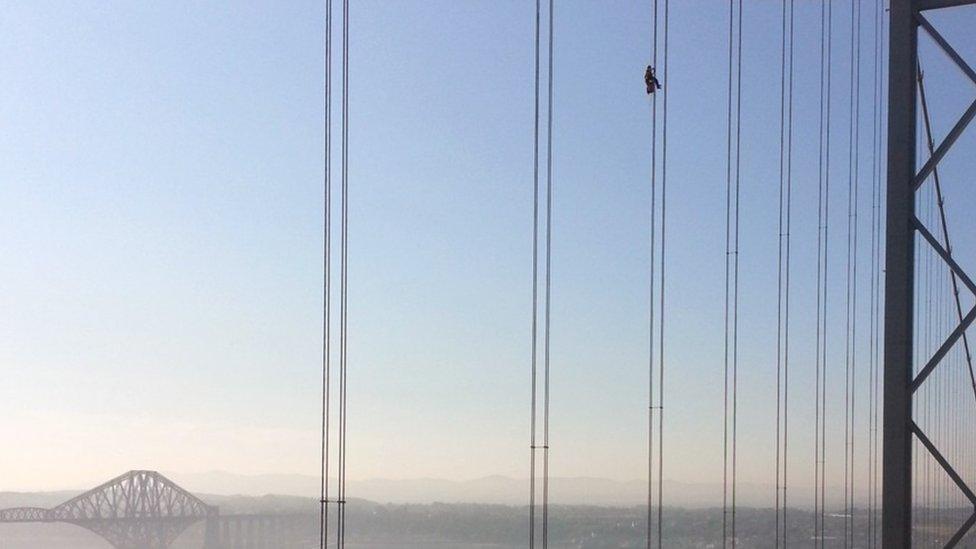
Paul Smith is also no stranger to danger.
He was a sniper section commander in the Black Watch, serving in Iraq, Kosovo and Bosnia, before setting his sights on a new career.
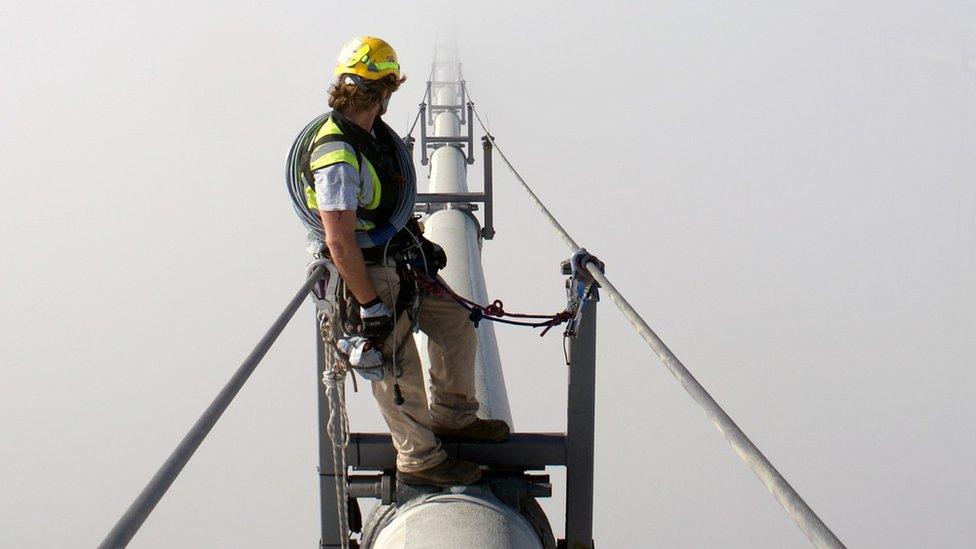
Visibility can be poor when you are high up on structures such as the Forth Road Bridge
These days, Paul can be found dangling on ropes from the top of structures such as the Forth Road Bridge, the Kelpies or Edinburgh's St Giles Cathedral.
The 35-year-old industrial coatings specialist says his work is less dangerous than people might think.

Rope access technicians can be seen on all sorts of structures, including wind turbines
"Ultimately it looks like a very dangerous job but we take the precautions and the measures to eliminate that," he says.
"In my own mind I am confident that I am not going to fall or anything risky is ever going to happen.
"Having said that, accidents do happen so complacency is something we pay very much attention to."

Paul Smith says his work is less dangerous than people might think

Paul, who works for Edinburgh-based firm SG Access, is what is known as a "Level 3" technician.
This is the highest qualification available from the Industrial Rope Access Trade Association (Irata).
The international body was formed in the late 1980s to tackle maintenance challenges in the offshore oil and gas industry.
Nowadays you will find technicians - the vast majority of whom are men - working at height on structures such as office buildings, tenements, wind turbines, masts and bridges.
Their tasks can vary widely - from washing windows to carrying out repairs and maintenance or even installing lights or cladding on buildings.
Last year Irata reported three deaths among its 475 member companies worldwide - two of which involved falls and one a sudden rockfall.

What is 'work at height?'
The Health and Safety Executive (HSE) defines work at height as "work in any place where, if precautions were not taken, a person could fall a distance liable to cause personal injury".
It says you are working at height if you "work above ground/floor level; could fall from an edge, through an opening or fragile surface; or could fall from ground level into an opening in a floor or a hole in the ground".

Paul says his previous role as a sniper has helped him stay safe in his new career.
"When we are in stressful situations, some attributes from my former career pay a dividend," he says.
"Maybe it's the way I conduct myself, the way I see my jobs in rope access as a military precision-type thing.
"I like to carry out things to the letter and make sure they are conducted properly."
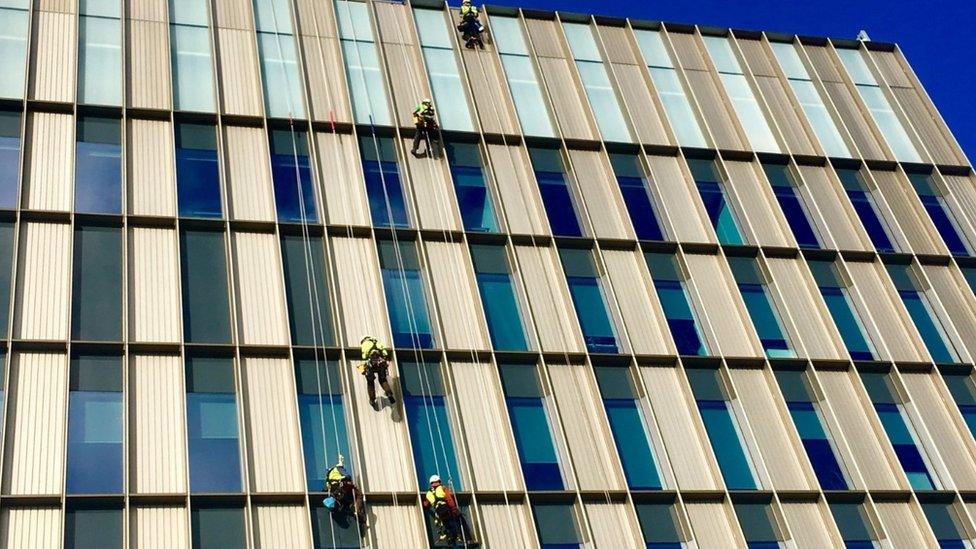
Technicians can be seen carrying out facade works at Glasgow College
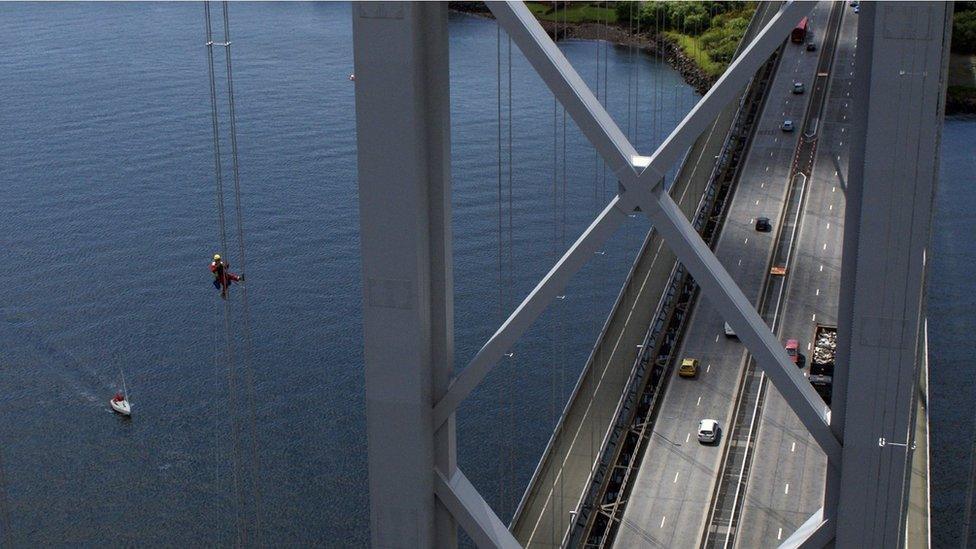
A rope access technician is seen working high above traffic on the Forth Road Bridge
According to Paul, his favourite structure to work on is the Forth Road Bridge.
He says: "In rope access the views are always beautiful but I love the outright exposure to all of the elements on the Forth Road Bridge - you can't hide from anything - it just tests everything about you."
Paul's boss, Calum MacDonald, says it is a rewarding industry to work in, despite the challenges.
He says: "We work hard to get hard jobs done well, and that is very satisfying, but we also have the privilege of going where most others can't, seeing what most others don't, and doing what most others won't.
"That's not a bad thing to be able to say about your day job."

Irata facts and figures
Irata has 475 member companies and about 61,000 certified technicians across 61 countries
Since 1989, members have reported a total of 11 fatalities - six between 2013 and 2017
In 2017, there were three deaths, one major injury, nine serious injuries and 49 minor injuries
There were 18 instances of "rope damage or severance" and 32 "dropped objects", including tool bags, buckets and a helmet which fell 38 floors
One in 60 Irata-certified technicians is female
Source: Irata International

Francois, who works for Inverkeithing-based company Web Rigging Services, has previously worked on Tower Bridge in London and The Louvre Abu Dhabi museum.
He says extreme temperatures or high winds often pose the biggest challenges for technicians and rope access companies.
He adds: "From what I have seen the North Sea is by far the most adverse environment, weather-wise.
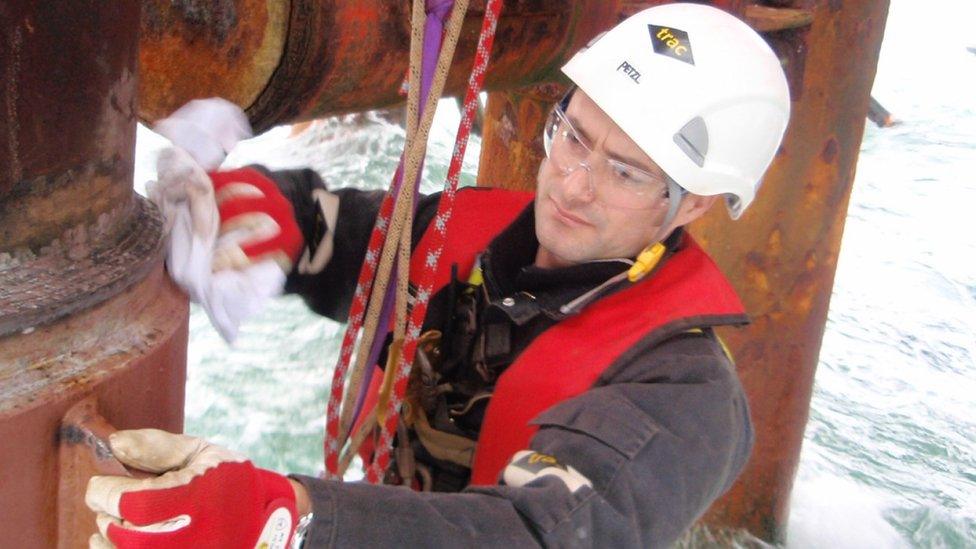
Francois Botha says the North Sea is "by far the most adverse environment" to work in
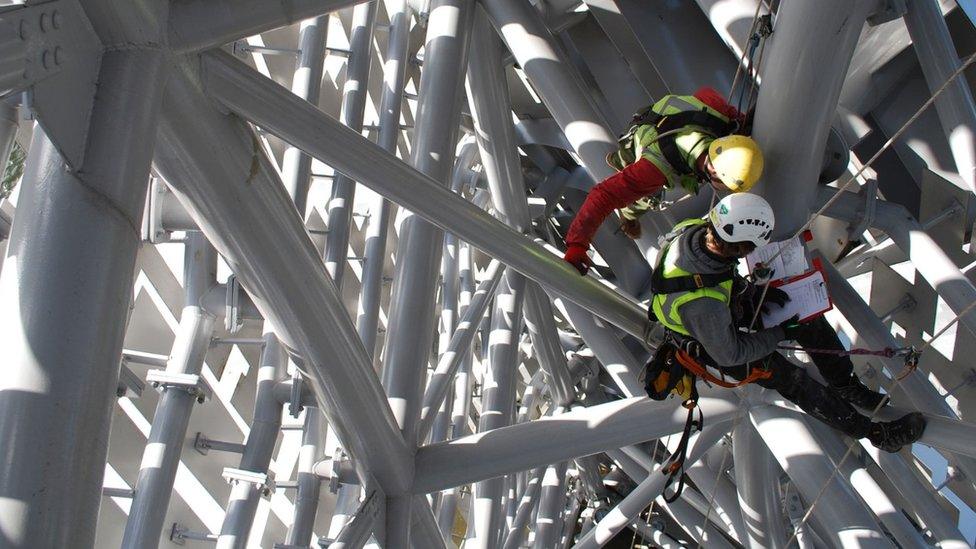
Rope access staff are seen working inside the iconic Kelpies sculptures in Falkirk
"Sometimes you can't get out on to a rig because there's a storm or you can be pretty much stuck inside a tea shack for a few days at a time."
Francois has one piece of advice for anyone who is thinking about working in rope access.
"Don't ever stop respecting gravity - it's always switched on, unlike electricity or a light," he says.
"If you disrespect it, it's going to bite you some time or another."
All images are subject to copyright